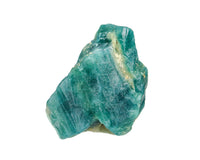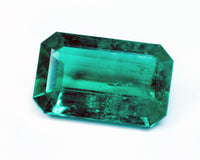- 1. Freshwater Pearls
- 2. Natural and Cultured Pearls
- 3. Freshwater Pearls Properties
- 4. Where Do Freshwater Pearls Come From?
- 5. Freshwater Pearls Healing Properties
- 6. Freshwater Pearls Magic Properties
- 7. Freshwater Pearls For Sale
Freshwater Pearls
A marvel of nature, pearls are among just a few gems produced by living creatures. It's amazing how a simple grain of sand can turn into something this beautiful and unique. Loved by women around the world, freshwater pearls are the highlight of any gem collection.
Natural and Cultured Pearls
Natural pearls are among the rarest and some of the most expensive gems. Sold by auctions, they make collectors vie to get one of those. Surprisingly, such delightful creations of nature are just the reaction of a mollusk to irritation when a foreign body gets inside the shell. The glands of a mollusk start producing nacre, which gradually envelops and insulates the foreign object. After a few years, this grain of sand or shell fragment becomes a pearl.
Natural freshwater pearls are hard to come by. A single mussel out of a thousand may carry a pearl, and the only way to know if there is something of value inside is to actually open a clam. Fortunately, 700 years ago, people learned to cultivate pearls. This made it possible to preserve the population of mollusks and significantly reduce the cost of organic gems. Today, 99% of the world’s supply is cultured pearls.
Cultured pearls are grown with a human assistance in conditions similar to natural. When cultivating river pearls, a tiny piece of donor mantle tissue is placed inside a mussel. Over time, these nuclei will turn into gems. Freshwater pearls grow in rivers, lakes, and even former rice fields where they have a favorable environment for breeding and nurturing pearls.
Pearl farms constantly monitor water temperature, its composition, and pH. As freshwater pearls grow, mollusks should be turned over once in a while in order to ensure a round shape. The process of cultivation is extremely complex and delicate and it continues for 3-8 years. It is practically impossible to affect the look and shape of a pearl when it is inside a clam. Moreover, mollusks may reject a donor tissue. Whether or not a pearl will grow and what shape is going to have depends only on nature.
Freshwater Pearls Properties
Freshwater pearl is an organomineral that consists of nacre and a horny substance called conchiolin. Nacre is basically calcium carbonate, and it’s the same substance that constitutes mother of pearl. In other words, pearls are a limestone compound of organic nature.
Due to the variety of shapes, colors, and sizes, pearls are extremely popular with collectors and jewelers. Their average size is 4-6 mm, although rare specimens exceed 10 mm in diameter. It takes 1.5 years for a pearl to reach a size of 3 mm. It will take another 1.5 years to grow to 7 mm. 10 mm pearls lingered inside a clam for at least 7 years.
Freshwater pearls vary in shape - oval, ovoid, drop-shaped, and baroque (irregular). Perfectly round specimens are extremely rare, especially when it comes to natural pearls. The colors of pearls are as varied as their shapes - white, cream, champagne, orange-pink, lilac, light purple, and brown. Normally, colors are slightly uneven and it may display transitions from one shade to another.
Unlike sea pearls, freshwater counterparts almost entirely consist of nacre. They are more durable and abrasion-resistant. Still, pearls are a pretty soft material (4.0 on the Mohs scale) so you should treat them carefully.
Most of the specimens grown in China are subjected to dying or radiation in order to change or improve their color. These treatments are unstable so the color may fade over time. Freshwater pearls are not as lustrous as seawater counterparts. For this reason, manufacturers tend to coat them with a thin layer of lacquer.
Where Do Freshwater Pearls Come From?
China is the world's leading exporter of pearls - it produces 10 times more cultured pearls than other countries combined. Most of China's production is located within 500 km of Shanghai. Taihu Lake is the cradle of pearling industry. The first man-grown pearls appeared here 7 centuries ago.
Some of the finest freshwater pearls are grown in Lake Biwa in Japan. Normally, pearls rarely exceed 10 mm in diameter but Biwa pearls can reach 13-15 mm. While talking about Japanese pearls, we should mention Keshi pearls. This name refers to any type of small irregular non-nuclear pearls. Typically, they are byproducts of pearl cultivation.
Freshwater Pearls Healing Properties
Pearls are believed to cure a variety of diseases, especially those associated with the kidneys, liver, and digestive system. In the past, pearl-based medicines were used to treat cataracts and eye conditions. The ancient Chinese utilized pearls to enhance visual acuity as well as treat ear infections. The well-known treatise of Tibetan medicine Chzhud-shi indicates that pearls help restore memory and treat nervous disorders. Powdered pearls could be bought in any medieval pharmacy until the 18th century.
Pearls are known as an excellent styptic. Therefore, pearl powders and infusions are used for bleeding gums, blood vomit, and blood hemorrhoids. Minerals found in its composition have a stimulating and strengthening effect on the human body.
Freshwater Pearls Magic Properties
In India, necklaces and other items featuring pearls are considered a symbol of prosperity, financial stability, and growth. In China, pearls are much respected by females. Girls wear these organic jewels to gain clarity of thoughts and drive away negative energy. Women opt for pearls to appear younger and improve their fertility.
Pearls symbolize wisdom, understanding, and the desire to compromise in Greece. They are sought-after among married ladies because they believe that pearls are capable of improving understanding between spouses and strengthening feelings.
Freshwater Pearls For Sale
Freshwater pearls for jewelry making from KenKenGems are more than beautiful. They are also nature-made (we provide no artificial jewels), affordable, and so unique. We supply a large variety of cultured pearls from China and Japan to meet every taste and budget. From inexpensive Keshi to luxurious round pearls, we have something to please every gemstone enthusiast. Our freshwater pearls are available in strands, half-strands, and 3, 5, and 10-piece sets, and the variety of natural and dyed jewels is simply mind-blowing. So don’t hesitate to learn what we have for you, we promise you won’t be disappointed.








